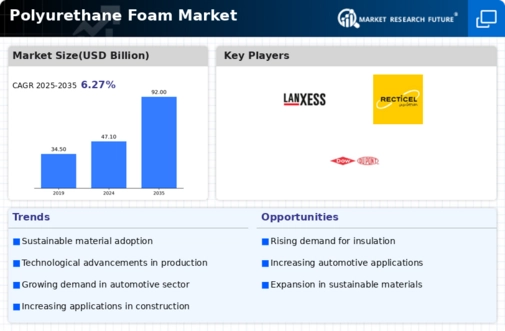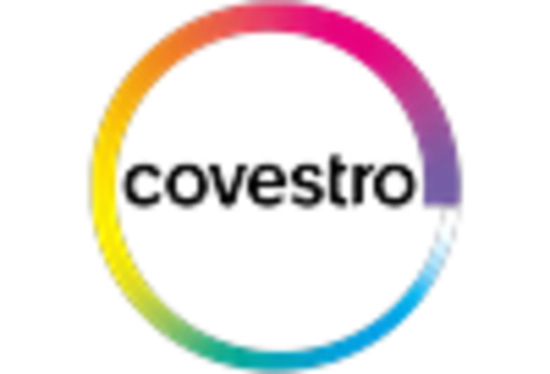Growth in Automotive Applications
The automotive industry is a significant driver for the polyurethane foam market, as manufacturers increasingly incorporate this material into vehicle interiors and components. Polyurethane foam is favored for its lightweight characteristics, which contribute to improved fuel efficiency and reduced emissions. In recent years, the automotive sector has seen a shift towards more sustainable materials, with polyurethane foam being a preferred choice for seats, dashboards, and insulation. The polyurethane foam market is expected to expand as automotive manufacturers continue to innovate and enhance vehicle comfort and performance. With The Polyurethane Foam projected to grow steadily, the demand for polyurethane foam in this sector is likely to follow suit, indicating a promising outlook for the polyurethane foam market.
Expansion of the Packaging Industry
The packaging industry is experiencing rapid growth, and polyurethane foam is emerging as a preferred material due to its protective qualities and versatility. As e-commerce continues to expand, the demand for effective packaging solutions is increasing, driving the need for polyurethane foam in protective packaging applications. The polyurethane foam market is expected to benefit from this trend, with projections indicating a growth rate of approximately 4% annually in the packaging segment. This growth is attributed to the material's ability to absorb shocks and protect products during transit. As companies seek to enhance their packaging strategies, the polyurethane foam market is likely to see increased adoption, indicating a promising trajectory for the future.
Rising Demand in Construction Sector
The construction sector is experiencing a notable surge in demand for polyurethane foam, primarily due to its superior insulation properties and lightweight nature. As energy efficiency becomes a priority in building designs, polyurethane foam is increasingly utilized in walls, roofs, and floors. The polyurethane foam market is projected to witness a growth rate of approximately 5% annually, driven by the need for sustainable building materials. Additionally, the increasing adoption of green building standards is likely to further propel the demand for polyurethane foam, as it contributes to energy savings and reduced carbon footprints. This trend indicates a robust future for the polyurethane foam market, as construction companies seek innovative materials that align with environmental goals.
Technological Innovations in Foam Production
Technological advancements in the production of polyurethane foam are playing a crucial role in shaping the market landscape. Innovations such as improved manufacturing processes and the development of bio-based polyols are enhancing the performance and sustainability of polyurethane foam products. The polyurethane foam market is witnessing a shift towards more efficient production methods that reduce waste and energy consumption. As manufacturers adopt these technologies, they are likely to offer a wider range of products that meet diverse consumer needs. This trend not only supports the growth of the polyurethane foam market but also aligns with the increasing demand for environmentally friendly materials. The potential for further advancements in foam technology suggests a dynamic future for the polyurethane foam market.
Increasing Consumer Awareness of Comfort Products
Consumer preferences are evolving, with a growing emphasis on comfort and quality in household products. The polyurethane foam market is benefiting from this trend, particularly in the bedding and furniture sectors. As consumers become more aware of the benefits of high-quality mattresses and ergonomic furniture, the demand for polyurethane foam is rising. The market for polyurethane foam in bedding is projected to grow significantly, with estimates suggesting an increase of around 6% annually. This growth is driven by the desire for better sleep quality and overall well-being. Consequently, manufacturers are focusing on developing innovative foam products that cater to these consumer demands, further solidifying the position of the polyurethane foam market in the comfort product segment.

















Leave a Comment